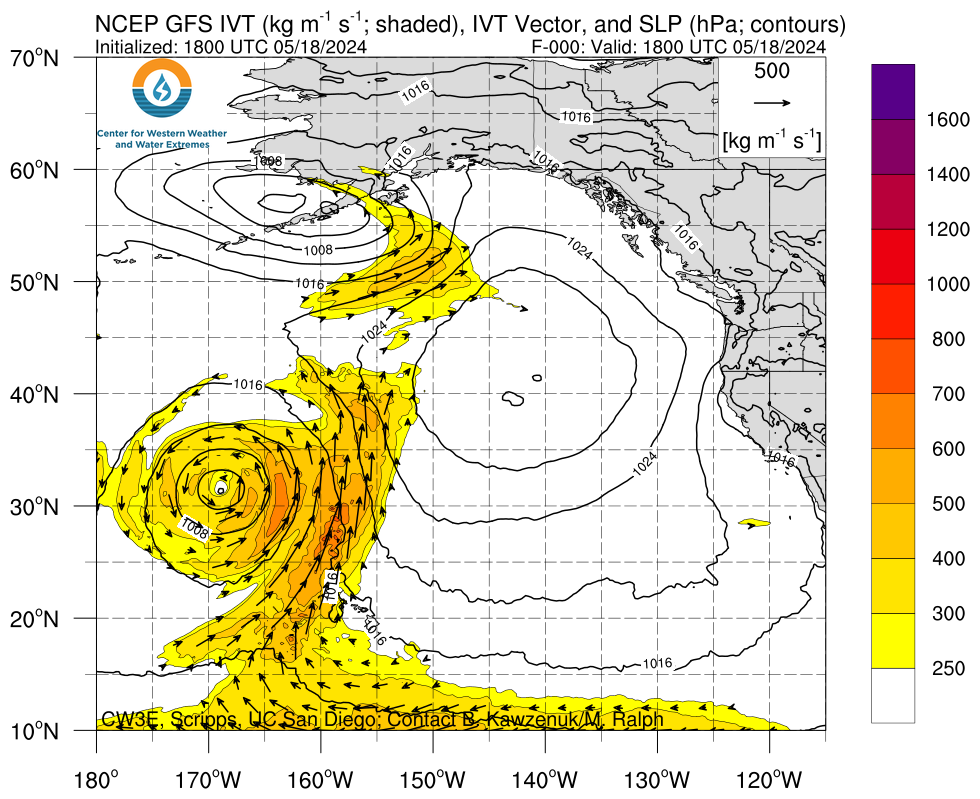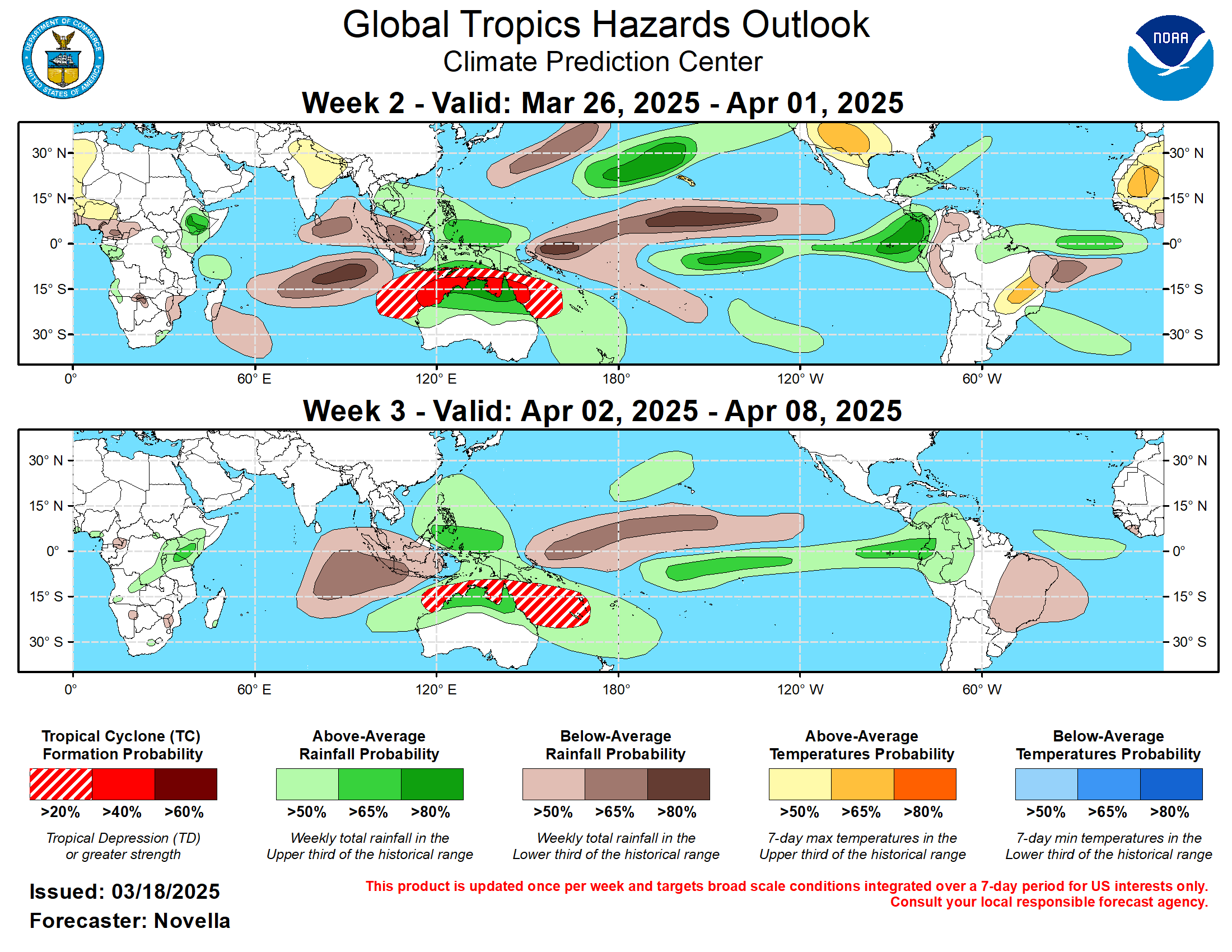This article focuses on what we are paying attention to in the next 48 to 72 hours. The article also includes weather maps for longer-term U.S. outlooks and a six-day World weather outlook which can be very useful for travelers.
First the NWS Short Range Forecast. The afternoon NWS text update can be found here after about 4 p.m. New York time but it is unlikely to have changed very much from the morning update. The images in this article automatically update.
Short Range Forecast Discussion
NWS Weather Prediction Center College Park MD
Valid 00Z Tue Jun 25 2024 – 00Z Thu Jun 27 2024…Heat wave focus shifts to the Southeast, Mid-South, and
central/southern Plains into midweek……Severe storms and flash flooding possible for portions of the Upper
Midwest into Monday night, shifting a bit south Tuesday……Monsoon-like conditions persist for the Southwest/Four Corners Region…
A broad upper-level ridge building over the west-central U.S. will
continue to produce potentially hazardous heat over the next few days.
Forecast high temperatures will continue to soar into the upper 90s across
much of the Plains and Mississippi Valley and into southeastern parts of
the Lower 48, with low 100s possible over the central Plains. When
combined with the humidity, heat index values may reach as high as 110,
prompting Heat Advisories and some embedded Excessive Heat Warnings.
Meanwhile, low temperatures will mostly remain in the mid- to upper 70s,
bringing little relief from the heat overnight. The arrival of this more
intense heat early in the Summer season leads to a higher level of
heat-related stress, especially for those outdoors and without reliable
air conditioning available. While the north-central U.S. can expect some
relief from the heat Tuesday and especially Wednesday behind a cold front,
the Southern Plains to Mid-South to Southeast will maintain potentially
dangerously hot conditions through the period, with a brief period of heat
returning to the Middle Mississippi/Ohio Valleys on Tuesday and
Mid-Atlantic on Wednesday.To the north, an upper-level shortwave and accompanying surface frontal
system will move along the northern tier of the central U.S. towards the
Upper Midwest. Deep moisture flowing northward ahead of the system will
bring increasing storm chances through tonight. Hot temperatures along
with the plentiful moisture will lead to strong to extreme instability,
prompting an Enhanced Risk of severe weather (level 3/5) from the Storm
Prediction Center. Tornadoes and large hail are possible with the storms,
but the primary threat is a corridor of very high wind across southern
Wisconsin and surrounding states. Additionally, a Marginal to Slight Risk
of excessive rainfall causing flash flooding is in place for portions of
the Upper Midwest with locally heavy downpours. The low system will
continue eastward on Tuesday, with a cold front pushing southeastward into
the Midwest/Great Lakes region. Storms developing along and ahead of the
front could tend to repeat over the same areas as storm motions become
more parallel to the increasingly east-to-westward oriented front. This is
prompting a larger Slight Risk of flash flooding for portions of the
Middle Mississippi Valley with a Slight Risk of severe weather aligned in
a similar area for Tuesday into Tuesday night. By Wednesday, the
southeastward progression of the front will produce thunderstorm chances
from the Lower/Middle Mississippi Valley into the Tennessee and Ohio
Valley to the Mid-Atlantic and Northeast.Daily shower and thunderstorm chances continue over portions of the
Southwest/Four Corners Region as an influx of ample tropical moisture
brings monsoon-like conditions. Some locally intense downpours are
possible and may lead to isolated instances of flash flooding, for broad
Marginal Risks in the Excessive Rainfall Outlook (ERO). Through Monday
evening, more focused rainfall may be possible in southeast Arizona, which
may cause more scattered instances of flash flooding especially for urban
areas around Tuscon. Then by Wednesday, rainfall may be particularly
concerning over portions of New Mexico that are sensitive to additional
rainfall due to recent burn scars, prompting an embedded Slight Risk there
in the Day 3 ERO. The higher moisture, cloud cover, and storms will keep
temperatures around average, with 80s and 90s in the Four Corners region
and 100s to 110 for the Southwest. Forecast high temperatures are
generally above average by 5-10 degrees elsewhere in the West, with 60s
and 70s along the immediate Pacific Coast, 70s and 80s in the Pacific
Northwest, and low to mid-90s for the Great Basin. Highs in the low to
mid-100s for portions of interior central California and the 110s for the
western Mojave/Sonoran Deserts have prompted heat-related advisories and
warnings.Elsewhere, areas of showers and storms may continue into this
evening/tonight in the vicinity of a surface low slowly pushing away from
northern New England. Farther south, additional storms are possible ahead
of a cold front over portions of the Southeast. Diurnal sea breeze-related
storms are also expected over Florida Monday and Tuesday. Welcome relief
from the weekend’s heat is present in the Mid-Atlantic, with highs
generally in the 70s and 80s. Temperatures will gradually rise across the
Eastern Seaboard Tuesday and Wednesday, with highs in the upper 80s to
90s.
To get your local forecast plus active alerts and warnings click HERE and enter your city, state or zip code.
Learn about wave patterns HERE.
Then, looking at the world and of course, the U.S. shows here also. Today we are looking at precipitation.
Please click on “Read More” below to access the full Daily Report issued today.
| Notices: What would you like to learn about? Please provide that to me via the comment section at the end of the article. |
Now more detail on the 48-Hour Forecast (It is a 48 to 72 Hour Forecast actually)
Daily weather maps. The Day 1 map updates twice a day and the Day 2 and 3 maps update only once a day. These maps update automatically. But if that does not happen, you can get updates by clicking HERE
TODAY (or late in the day the evening/overnight map will appear) (Key to surface fronts shown on maps and you will then also be able to insert a city name or zip code and get a local NWS forecast).
TOMORROW
NEXT DAY
We have a new animation of the forecast which shows how things may play out over the next 60 hours. To update click ANIMATION. Doing so will get you to the dashboard. You can then step through the animation or hit LOOP on the upper right of the display. You will have to hit the back arrow ← at the top left on your computer to get back into this article. It is a little more trouble than before but I think NOAA scrapped the animation routine I was using so we have to keep up with “progress”.
The NWS Climate Prediction Center’s: Watches, Warnings, and Advisories plus other information can be found HERE. That takes you to the NWC Severe Weather Site. From there you can select among many categories of information. Remember to hit the back arrow ← at the top left of your screen to return to this article.
ATMOSPHERIC RIVERS
This tells us what is approaching the West Coast. Click HERE to update If I have not gotten around to doing the update. Here is some useful information about Atmospheric Rivers.
Below is the current five-day cumulative forecast of precipitation (Updates can be found HERE)
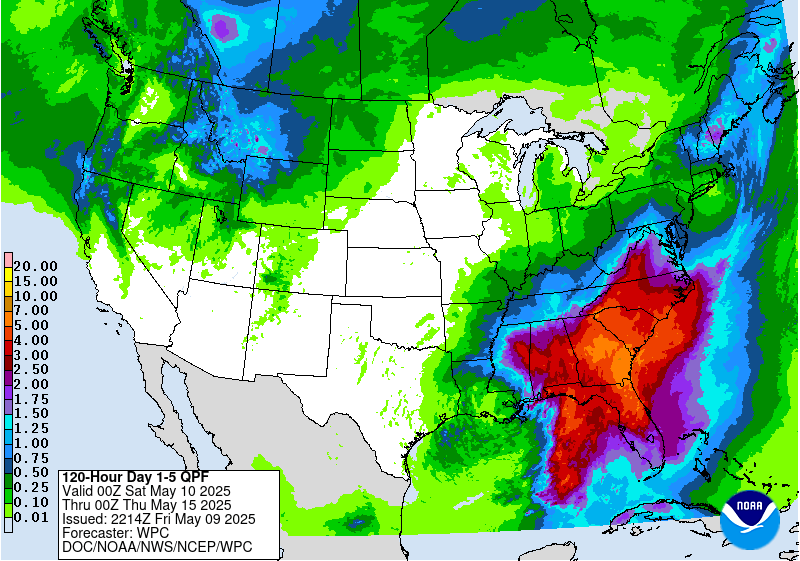
Ski SnowReports will Resume in the Fall.
Now we look at Intermediate-Term “Outlook” maps for three time periods. Days 6 – 10, Days 8 – 14, and Weeks 3 and 4. An outlook differs from a forecast based on how NOAA uses these terms in that an “outlook” presents information as deviation from normal and the likelihood of these deviations.
Below are the links to obtain updates and additional information. They are particularly useful if you happen to be reading this article significantly later than when it was published. I always try to provide readers with the source of the information in my articles. These links may also be useful for those viewing this article on a cell phone or other small screen.
| Days 6 – 10 (shown in Row 1) | Days 8 – 14 (Shown in Row 2) | Weeks 3 and 4 (Shown in Row 3 but updates only on Fridays) |
| https://www.cpc.ncep.noaa. gov/products/predictions/610day/ | https://www.cpc.ncep .noaa.gov/products/predictions/814day/ | https://www.cpc.ncep.noaa.gov/products/predictions/WK34/ |
Showing the actual maps. They should now update automatically. The Week 3 – 4 Outlook only updates on Fridays. So below is what I call the Intermediate-term outlook. On Fridays, it extends out 28 Days. That declines day by day so on Thursday it only looks out 22 days until the next day when the Week 3 – 4 Outlook is updated and this extends the outlook by one additional week.
| 6–
10
|
|
|
| 8–
14 |
|
|
| 3–
4 |
|
|
HAZARDS OUTLOOKS
Click here for the latest complete Day 3 -7 Hazards forecast which updates only on weekdays. Once a week probably Monday or Tuesday I will update the images. I provided the link for readers to get daily updates on weekdays. Use your own judgment to decide if you need to update these images. I update almost all the images Friday Night for the weekend edition of this Weather Report. So normally readers do not need to update these images but if the weather is changing quickly you may want to.
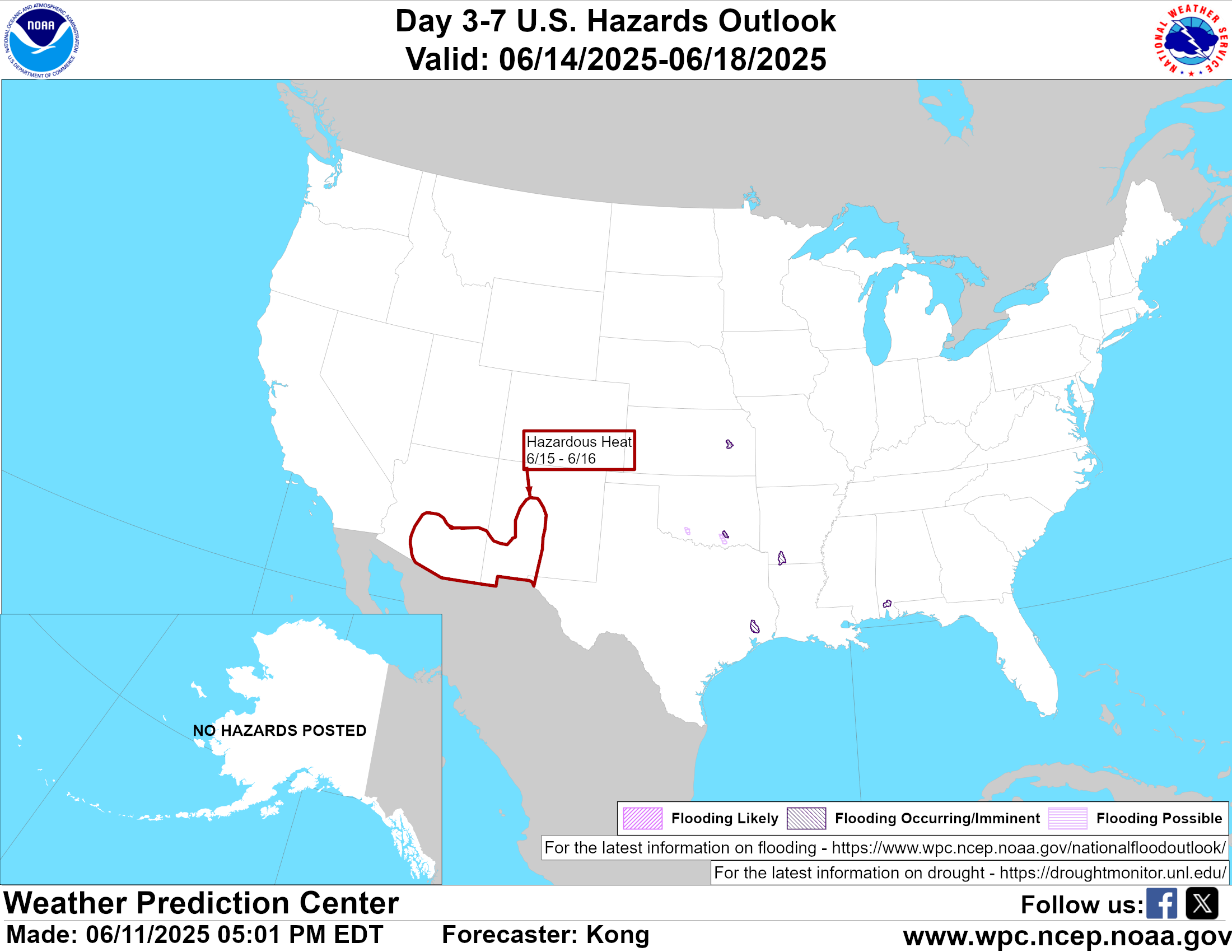
Temperature month to date can be found at https://hprcc.unl.edu/products/maps/acis/MonthTDeptUS.png
Precipitation month to date can be found at https://hprcc.unl.edu/products/maps/acis /MonthPNormUS.png
World Forecast [that website is has been intermittent so be patient]
Below are the Day 1 -3 and 4-6 forecasts for temperature and precipitation. Updates and much additional information can be obtained HERE
World Temperature Anomalies

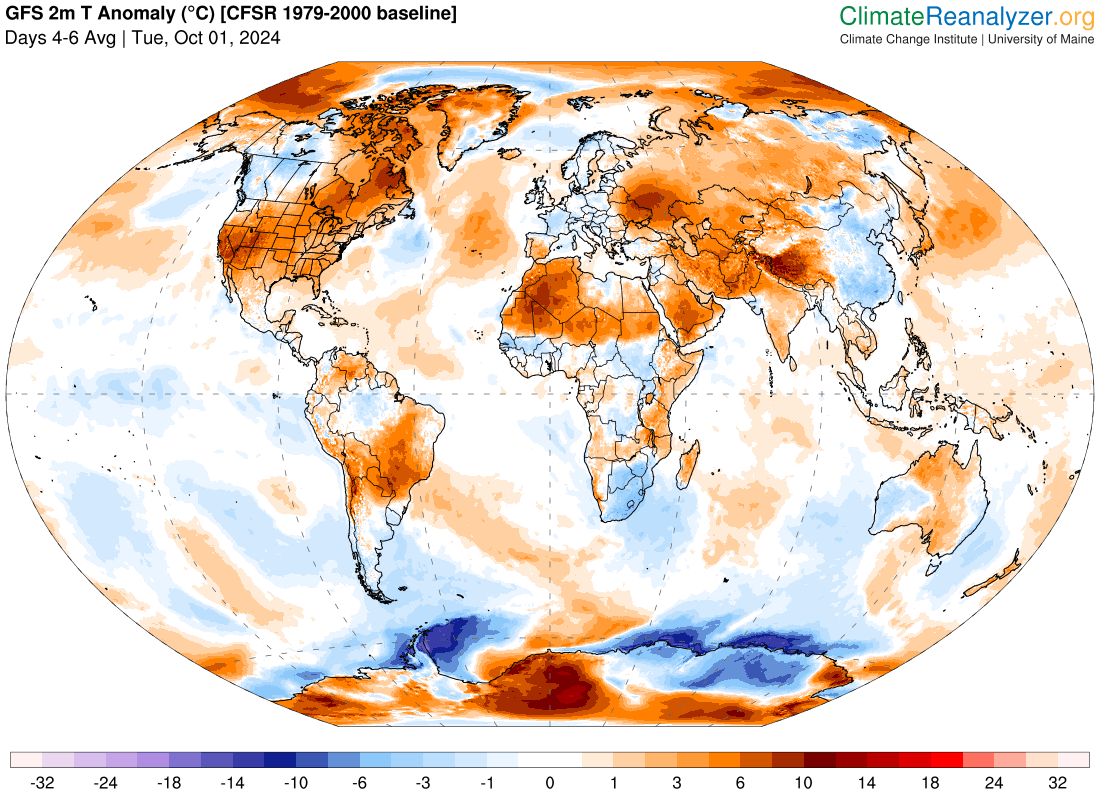
World Accumulated Precipitation
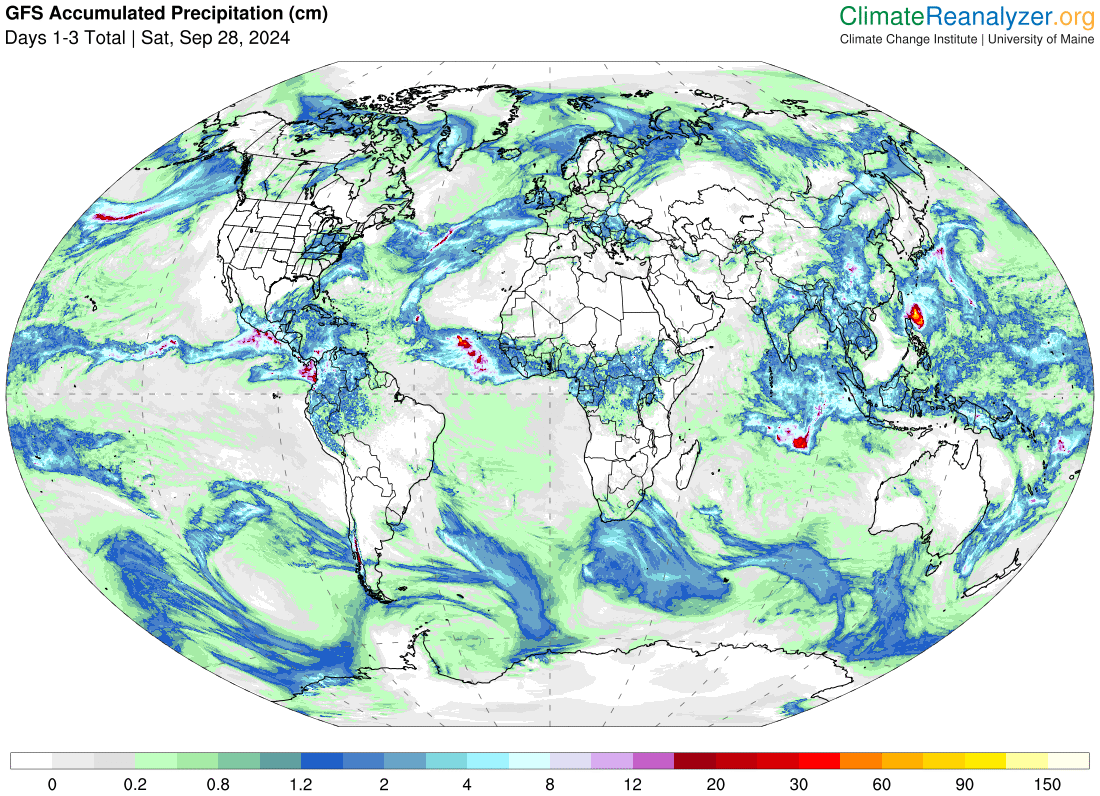

This information is provided by the University of Maine. They draw upon many different sources. There is a lot of information available at the link provided. I have just provided two useful forecasts. There are probably over a hundred different forecasts available from this source.
Worldwide Tropical Forecast (This is a NOAA Product)
This graphic updates on Tuesdays) If it has not been updated, you can get the update by clicking here Readers will only have to do that if they are reading this article much later than the date of it being published.
Information on Tropical Storms can be found HERE. Western Pacific information can be found HERE. Note that unless there is an out-of-season storm the below images will not update until the National Hurricane Center starts their seasonal update of these maps on June 1. I include them simply because there can be an out-of-season event in which case it should show up in these maps.


–
| I hope you found this article interesting and useful. |

